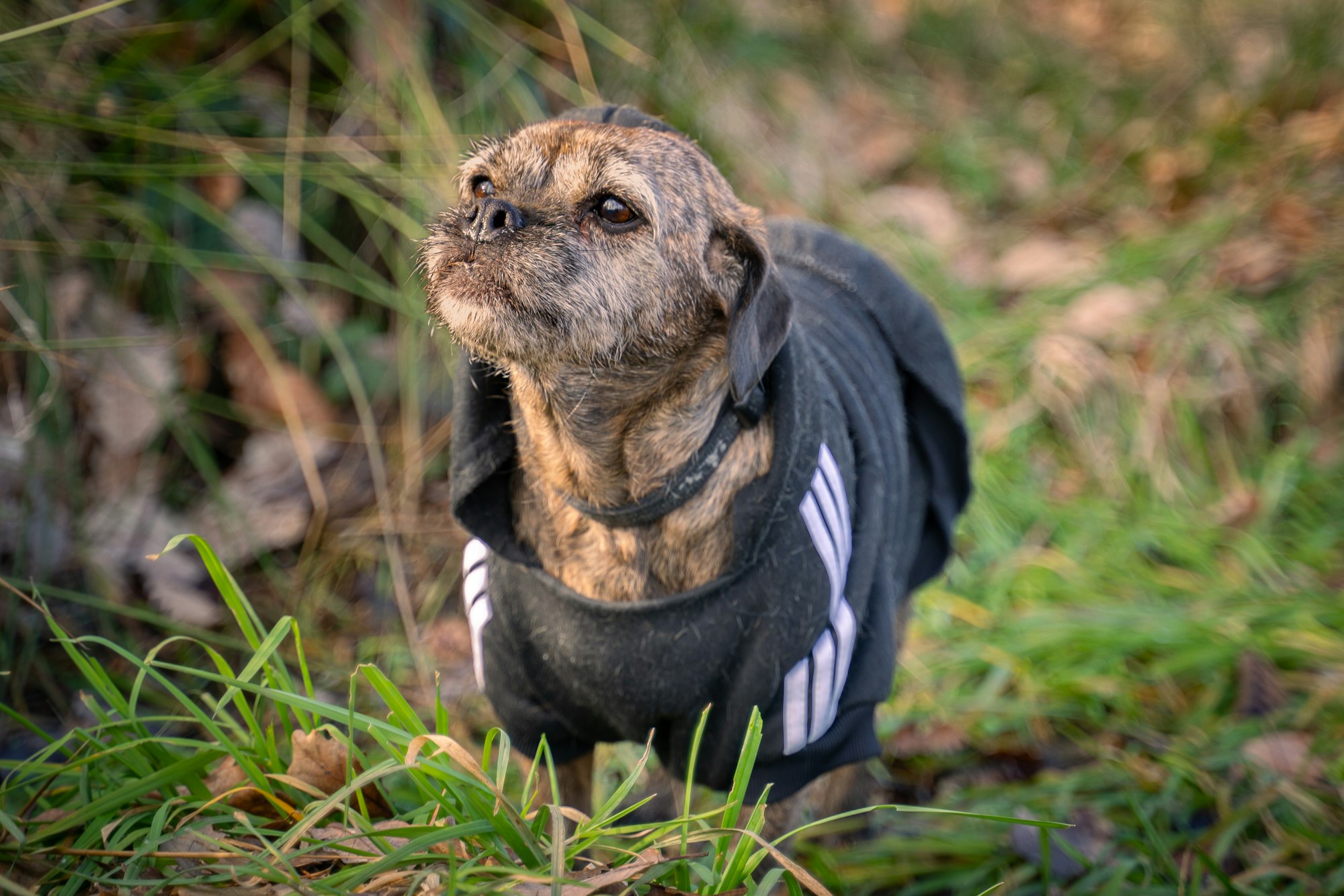When it comes to our furry companions, their health and well-being are of the utmost importance. One vital aspect of a dog's health is their body temperature. Just like in humans, dogs have a normal body temperature range that indicates their overall health status. In this article, we'll delve into the topic of a normal dog temperature, what factors can affect it, and how pet owners can ensure their canine friends are comfortable and healthy.
As responsible pet owners, understanding our dogs' basic physiological needs is crucial. One such factor is their body temperature. Dogs cannot communicate discomfort or illness in the same way humans can, which makes it essential for pet owners to be aware of the signs of temperature-related issues.

Why is Dog Temperature Important?
Maintaining a dog's body temperature within a healthy range is crucial for their overall well-being. Just like in humans, temperature regulation plays a significant role in various physiological processes in dogs. Here's why understanding and monitoring your dog's temperature is dominant:
Vital Health Indicator: A dog's body temperature can serve as an essential indicator of their health status. Sudden spikes or drops in temperature can be a sign of underlying health issues that require attention.
Early Detection of Illness: Monitoring your dog's temperature regularly can help you detect illnesses early on. Fever, for example, is often an early sign of infection or inflammation, allowing you to seek veterinary care promptly.
Response to Stress: Dogs can experience stress due to various factors, such as changes in environment, travel, or exposure to new people or animals. Stress can affect their temperature, and understanding this can help you address their needs and comfort.
Heat-Related Issues: Dogs are prone to heatstroke, especially in hot weather. Knowing your dog's baseline temperature can help you identify when they might be at risk of overheating.

Postoperative Monitoring: If your dog has undergone surgery, monitoring their temperature during the recovery period can help ensure a smooth healing process and detect any postoperative complications.
In summary, a dog's temperature serves as a valuable diagnostic tool that aids in detecting health issues, managing stress, preventing heat-related problems, and promoting overall well-being.

The Normal Range of Dog Temperature
A dog's normal body temperature typically falls within the range of 99.5°F to 102.5°F (37.5°C to 39.2°C). However, it's crucial to note that this range can vary slightly based on factors such as breed, size, and activity level. Here's what you need to know about the normal range of dog temperature:
Baseline Temperature: For most dogs, a temperature of around 101.5°F (38.6°C) is considered a baseline. This means that a dog's temperature may naturally fluctuate around this point throughout the day.
Environmental Factors: Factors such as the surrounding temperature and your dog's activity level can influence their body temperature. Exercise and warm weather can lead to temporary increases, while colder conditions might cause slight decreases.
Breed Variations: Smaller dog breeds tend to have slightly higher body temperatures than larger breeds. Additionally, brachycephalic breeds (those with short noses) might have more difficulty regulating their body temperature due to their anatomy.
Age and Health: Puppies and older dogs may have slightly different temperature ranges. Additionally, a dog's temperature can change when they are ill or recovering from an injury or surgery.
Regular Monitoring: To understand your individual dog's baseline temperature, it's a good idea to measure it when they are healthy. This way, you can more easily recognize deviations from their normal range in the future.
In summary, knowing the normal range of dog temperature and its variations based on different factors is essential for gauging your dog's health and well-being. Monitoring their temperature and recognizing changes can help you provide timely care and ensure they lead a comfortable and happy life.
How to Measure a Dog's Temperature
Measuring your dog's temperature at home can be a bit intimidating, but with the right approach and tools, it's a straightforward process. Here's a step-by-step guide on how to measure your dog's temperature safely and accurately:
Materials Needed:
- Digital rectal thermometer designed for pets
- Petroleum jelly or water-based lubricant
- Disposable gloves (optional)
- Treats and praise for positive reinforcement
Steps:
- Prepare: Make sure you have everything you need within reach. Put on disposable gloves if you prefer.
- Calming Your Dog: Approach your dog calmly and gently. Speak to them in a soothing voice and offer treats to create a positive association with the process.
- Positioning: If your dog is small, you can place them on a stable surface at a comfortable height. For larger dogs, you might need a helper to hold them steady. Lift their tail gently to expose the rectal area.
- Lubricate: Apply a small amount of petroleum jelly or water-based lubricant to the tip of the thermometer to make insertion easier and more comfortable.
- Insert the Thermometer: Gently insert the thermometer into your dog's rectum, about 1 to 1.5 inches (2.5 to 3.8 cm) for small dogs and 2 to 3 inches (5 to 7.6 cm) for larger dogs. Be gentle and avoid inserting it too far.
- Wait for Reading: Keep the thermometer in place for the specified time on the thermometer's instructions, usually around 30 seconds. Some digital thermometers might beep when they're done.
- Remove and Read: Carefully remove the thermometer and check the reading. Digital thermometers usually display the temperature on their screen.
- Reward and Comfort: Praise and reward your dog for their cooperation. You want them to associate this experience with positivity.
- Clean Up: Clean the thermometer with warm, soapy water and disinfect it before storing. Wash your hands as well.
Remember that rectal temperature is the most accurate way to measure a dog's temperature. If you're unsure or uncomfortable doing it yourself, consult your veterinarian for guidance or have them demonstrate the process.
Factors Affecting Dog Temperature
A dog's body temperature can be influenced by various factors, and understanding these can help you better care for your furry friend. Here are some key factors that can affect a dog's temperature:

Environmental Conditions:
- Temperature: Hot or cold weather can lead to changes in a dog's body temperature. Make sure your dog has access to appropriate shelter and water in extreme conditions.
- Humidity: High humidity can make it harder for dogs to cool down through panting, potentially causing their body temperature to rise.
Activity Level:
- Exercise: Physical activity generates heat, and highly active dogs might experience a temporary increase in temperature. Be mindful of exercise during hot weather.
Breed and Size:
- Breed: Different breeds have different temperature regulation capabilities. Brachycephalic breeds, such as French Bulldogs, are more susceptible to overheating due to their shorter airways.
- Size: Smaller dogs have a higher metabolic rate, which can result in a slightly higher baseline temperature.
Health and Stress:
- Illness: Infections, inflammation, and other illnesses can lead to fever, causing a dog's temperature to rise. Monitoring temperature changes can help identify potential health issues.
- Stress: Dogs can experience stress due to changes in routines, new environments, or interactions with other animals. Stress can influence their body temperature.
Age:
- Puppies: Puppies have a higher metabolic rate and might have slightly elevated temperatures compared to adult dogs. This is usually not a cause for concern unless accompanied by other symptoms.
Being aware of these factors and their impact on your dog's temperature can help you take proactive steps to ensure their comfort, health, and safety. Regularly monitoring your dog's temperature and observing their behavior can give you valuable insights into their overall well-being.
Signs of Abnormal Dog Temperature
Recognizing the signs of abnormal dog temperature is crucial for identifying potential health issues and seeking timely veterinary care. Here are some signs to watch out for:
1. Excessive Panting: Dogs pant to regulate their body temperature, but excessive panting that isn't linked to activity or heat could indicate a fever or overheating.
2. Shivering: Uncontrollable shivering, especially in warm conditions, might signal a low body temperature.
3. Lethargy: If your dog seems unusually tired and lacks energy, it could be a sign of an underlying issue, including a fever.
4. Warm Nose: Contrary to popular belief, a warm nose alone is not a reliable indicator of fever. It's better to consider other symptoms.
5. Loss of Appetite: A fever or other health problem might cause your dog to lose interest in food.
6. Rapid Breathing: Increased respiratory rate, especially when at rest, could indicate a fever.
7. Vomiting or Diarrhea: These symptoms, along with a change in body temperature, might suggest an illness.
8. Tremors or Seizures: Extreme temperature fluctuations can sometimes lead to tremors or seizures.
9. Dehydration: Abnormal temperatures can contribute to dehydration. Look for signs like dry gums or lethargy.
What to Do If Your Dog's Temperature is Abnormal
Discovering that your dog's temperature is outside the normal range can be concerning, but there are steps you can take to ensure their well-being:
1. Retake the Temperature: Ensure that the abnormal reading is accurate. Retake your dog's temperature after a short interval to confirm.
2. Consult a Veterinarian: If your dog's temperature remains abnormal or if they exhibit other concerning symptoms, contact your veterinarian. They can guide you on the best course of action.
3. Monitor Symptoms: Keep a close eye on your dog's behavior and overall condition. Note any additional symptoms that might help the vet make a more accurate diagnosis.
4. Avoid Self-Medication: Never administer human medications to your happy dog without professional advice. Some medications can be harmful or even toxic to dogs.
5. Provide Comfort: Keep your dog comfortable and hydrated. Make sure they have access to water and a calm environment.
6. Avoid Extreme Temperatures: Keep your dog away from extreme weather conditions that could exacerbate their temperature issues.
7. Follow Vet Recommendations: Easing fear at the vet and if your veterinarian recommends treatment or further tests, follow their guidance closely.
8. Preventative Measures: Discuss ways to prevent future temperature-related issues with your vet. This might involve adjusting their living conditions, exercise routines, or diet.
Remember, a professional evaluation by a veterinarian is essential to accurately diagnose and treat any health concerns. Your dog's well-being is a priority, so seek expert advice whenever you notice abnormal symptoms or behaviors.

Tips to Help Regulate Your Dog's Temperature
As a responsible pet owner, there are several steps you can take to help your furry friend maintain a comfortable body temperature, especially during temperature fluctuations. Here are some tips to keep in mind:
1. Provide Adequate Water: Hydration is key to regulating body temperature. Always ensure your dog has access to clean and fresh water, especially in hot weather.
2. Create a Comfortable Environment: Whether indoors or outdoors, provide your dog with a shaded and well-ventilated area where they can rest and cool down.
3. Avoid Hot Pavements: During hot weather, pavements and sidewalks can become scorching. Walk your dog during cooler times of the day to prevent burnt paws.
4. Limit Outdoor Activities: While exercise is essential, avoid strenuous activities during the hottest parts of the day. Opt for walks or playtime in the early morning or late afternoon.
5. Use Cooling Products: Consider using cooling vests, mats, or bandanas designed to help lower your dog's body temperature. These products can provide relief, especially for breeds that are prone to overheating.
6. Avoid Overexertion: Be mindful of your dog's energy levels. If they seem tired or are panting excessively, it's time to take a break.
7. Monitor Breeds at Risk: Some breeds, such as Bulldogs, Pugs, and other brachycephalic syndrome breeds, are more susceptible to overheating due to their anatomy. Be extra cautious with these breeds.
8. Groom Regularly: Regular grooming helps keep your dog's coat clean and free of matting, allowing air to circulate and regulate their body temperature more effectively.
9. Provide Adequate Shelter: Whether your dog lives indoors or outdoors, ensure they have access to shelter that protects them from extreme weather conditions.
10. Never Leave in a Hot Car: Never leave your dog in a parked car, even with the windows cracked. The temperature inside a car can become dangerously hot within minutes.
11. Watch for Signs of Discomfort: Be observant of signs like heavy panting, excessive drooling, or lethargy. These could indicate that your dog is struggling to regulate their temperature.
12. Frozen Treats: On hot days, offer your dog frozen treats like dog-friendly ice cubes or homemade frozen snacks to help them cool down.
13. Consult Your Vet: If you have concerns about your dog's ability to regulate their temperature, consult your veterinarian for breed-specific advice and recommendations.
By being proactive and attentive to your dog's needs, you can help them stay comfortable and safe, regardless of the temperature outside. Your care and attention contribute significantly to their overall health and well-being.
Conclusion
Maintaining a normal dog temperature is vital for their overall health and well-being. By understanding the factors that influence their temperature and being vigilant about signs of abnormalities, you can ensure that your furry friend leads a comfortable and healthy life.
FAQs
Q1: Can I use a regular human thermometer to measure my dog's temperature?
- A: It's recommended to use a digital thermometer specifically designed for pets to ensure accurate readings.
Q2: My dog's nose feels warm. Is that a sign of fever?
- A: Not necessarily. A warm nose alone isn't always an indication of fever. Look for other signs such as lethargy or excessive panting.
Q3: Are certain dog breeds more sensitive to temperature changes?
- A: Yes, brachycephalic breeds and smaller dogs might have a harder time regulating their body temperature.
Q4: Can I give my dog medication to reduce their fever?
- A: Never administer human medication to dogs without consulting a veterinarian. Some medications can be harmful to them.
Q5: What's the best way to cool down an overheated dog?
- A: Use cool (not cold) water and wet towels to gently cool them down. Avoid very cold water, as it can cause shock.